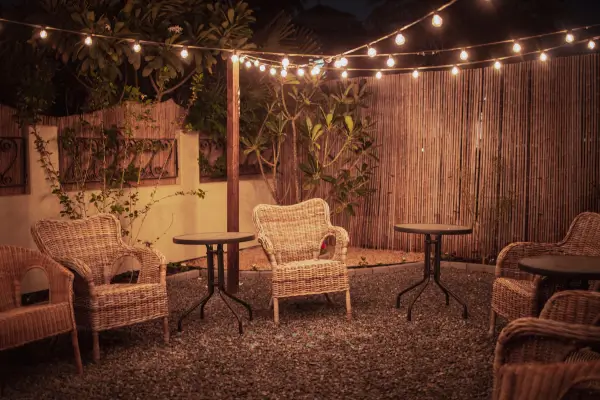Making a wooden jewelry box is a rewarding project that combines functionality and craftsmanship. It’s perfect for storing accessories or gifting something handmade and heartfelt.
From cutting wood to adding personalized touches, this guide simplifies the process for all skill levels. With basic tools and creativity, you can craft a beautiful and durable box.
Whether you’re a beginner or experienced woodworker, let’s create a jewelry box that’s both stylish and practical.
Start today and enjoy the satisfaction of building something truly unique!
Materials and Tools Needed
Before starting, gather the following materials and tools:
Materials:
- Hardwood or plywood (oak, walnut, maple, or birch work well)
- Wood glue for strong joints
- Sandpaper (120- and 220-grit) for smoothing surfaces
- Hinges and latch (optional for a secure closure)
- Wood stain, varnish, or paint for finishing touches
- Soft fabric lining (optional, such as velvet or felt)
- Small nails or screws for reinforcement
- Wood filler (optional for seamless joints)
Tools:
- Saw (hand saw, jigsaw, or table saw for precise cuts)
- Clamps for holding pieces in place
- Drill with bits (for hinges and securing parts)
- Measuring tape or ruler for accurate dimensions
- Wood chisel (for detailing and fitting hinges)
- Paintbrush or cloth (for staining or painting)
- Pencil for marking measurements
- Hammer or mallet for assembling
Step 1: Designing Your Jewelry Box
Begin by deciding on the dimensions of your box. A common size is around 8” x 4” x 3”, but you can customize it based on your preference. Sketch the dimensions and plan where the hinges and compartments will be placed. Consider adding sections for rings, necklaces, or small trinkets.
If you’re planning a decorative look, choose a design style:
- Classic Minimalist – Simple and sleek with a smooth finish
- Rustic Look – Natural wood grain with an aged appearance
- Carved or Engraved Designs – Personalized etchings or patterns
Step 2: Cutting the Wood
- Measure and mark the wood according to your design:
- Bottom panel (8” x 4”)
- Two longer sides (8” x 3”)
- Two shorter sides (4” x 3”)
- Lid panel (8” x 4”)
- Use a saw to carefully cut each piece, ensuring smooth and even edges.
- Sand each piece with 120-grit sandpaper to remove rough edges.
- If including dividers for sections inside the box, cut extra small panels accordingly.
Step 3: Assembling the Box
- Apply wood glue to the edges of the side panels and attach them to the bottom panel.
- Use clamps to hold the pieces together while the glue dries (approximately 30 minutes to 1 hour).
- Once dry, reinforce the joints with small nails or screws to add durability.
- If you’re adding internal compartments, cut and glue smaller divider panels inside before proceeding.
- Check for alignment and fill any small gaps with wood filler, then sand for a seamless look.
Step 4: Attaching the Lid
- Position the lid panel on top of the box.
- Use small hinges to attach the lid at the back, ensuring smooth opening and closing.
- If desired, install a latch at the front to secure the lid.
- For a unique touch, consider using decorative hinges or a magnetic closure system.
Step 5: Sanding and Finishing
- Sand the entire box using 220-grit sandpaper for a smooth finish.
- Wipe off dust with a damp cloth.
- Apply wood stain or paint using a brush or cloth, allowing it to dry completely.
- If desired, add a protective finish like varnish or polyurethane to enhance durability and give the box a polished appearance.
- If creating a rustic look, consider distressing the edges slightly for an aged effect.
Step 6: Adding a Fabric Lining (Optional)
- Cut soft fabric (felt or velvet) to fit the inside panels of the box.
- Use a glue gun or adhesive spray to attach the fabric securely.
- Press down firmly to ensure a smooth finish and avoid wrinkles.
- If adding ring slots, roll small fabric-covered foam pieces and glue them in place.
Customization Ideas
Enhance the uniqueness of your jewelry box with these ideas:
- Engraving a Name or Design – Personalize with initials or patterns.
- Carved or Etched Lid – Use wood-burning tools for artistic touches.
- Adding Small Drawers – Expand storage by incorporating sliding sections.
- Painting or Staining in Multiple Colors – Use two-tone finishes for a modern aesthetic.
Common Mistakes to Avoid
- Not Measuring Properly – Always double-check dimensions before cutting.
- Skipping Sanding Steps – Rough edges can make the box look unfinished.
- Using Too Much Glue – Excess glue can create messy seams.
- Forgetting to Test Hinges Before Final Assembly – Ensuring smooth movement before securing them prevents later issues.
- Neglecting a Protective Finish – Without varnish or sealant, wood may wear out faster.
Final Thoughts
Creating a wooden jewelry box is an excellent way to enhance your woodworking skills while making a meaningful and personalized item. Whether as a gift or for personal use, this project offers a unique handmade storage solution for treasured accessories.
By following these detailed steps, you can craft a durable, stylish, and functional jewelry box that reflects your personal touch. Take your time, enjoy the process, and create something that lasts a lifetime!



